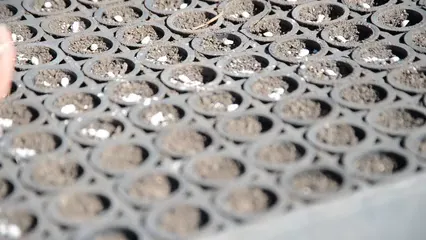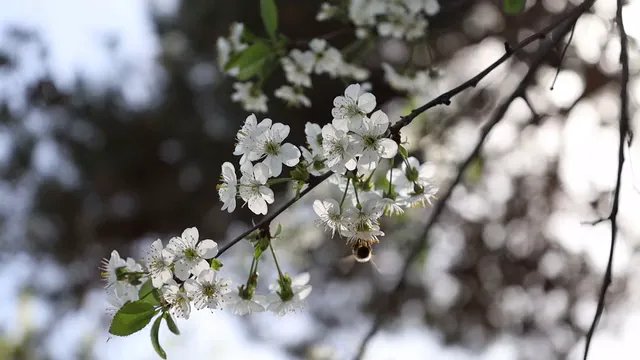

4 O’Clock Flowers: A Comprehensive Guide to Growing and Caring for Mirabilis Jalapa
Introduction
Have you heard of the 4 O’Clock flower? Also known as Mirabilis jalapa, this delightful bloom is famous for its unique evening opening. As the sun begins to set, these flowers burst forth in vibrant colors. Gardeners and flower lovers adore them for their beauty and ease of care.
Speaking of beauty, if you’re looking to enhance your gardening experience, check out this Flower Planting Tool Set. It has all the essentials for digging, planting, and maintaining your favorite blooms with ease!
Summary and Overview
The 4 O’Clock flower hails from Peru and has been cultivated for centuries. Its historical significance in gardening is notable. Common colors include red, pink, yellow, and white, often featuring bi-colored varieties. This flower blooms in the late afternoon and wilts by morning, attracting hummingbirds and moths. Its popularity stems from its vibrant blooms and minimal maintenance needs, making it a favorite among gardeners.
To nurture these beauties, consider using Organic Fertilizer for Flowering Plants. It provides essential nutrients without the harmful chemicals, helping your plants thrive naturally.

Growing Conditions
Climate and Hardiness Zones
For optimal growth, 4 O’Clock flowers thrive in warm climates. They prefer USDA hardiness zones 7 to 10. In colder areas, these flowers can be grown as annuals. Just remember to dig up the roots before frost and store them for spring planting.
These flowers are drought-tolerant, making them an excellent choice for gardens with less water. They love full sun, needing at least six hours of direct sunlight each day. When it comes to soil, well-drained, sandy, or loamy types work best. You can learn more about Florida plants for full sun to complement your garden.
Looking to enhance your gardening experience? A Garden Kneeler and Seat can save your knees and back while you tend to your flowers. It’s a game changer for long gardening sessions!
Understanding the best plants for your climate can enhance your garden’s success. Florida plants for full sun can provide additional insights.
The average temperature range for their growth is between 70°F and 85°F. So, before planting, check your local climate conditions to ensure your 4 O’Clocks will thrive!

Planting Instructions
Seed Sowing and Care
Want to grow beautiful 4 O’Clock flowers? Start by sowing seeds outdoors in spring after the last frost. For indoor planting, begin 4 to 6 weeks prior. Make sure to plant seeds about 1/4 inch deep and space them 1 inch apart. This method allows for optimal growth.
Seeds typically germinate within 5 to 10 days, making it a quick process. Once seedlings reach about 2.5 cm, thin them out to ensure healthy development. This step is crucial to prevent overcrowding, which can hinder growth.
If you’re in a cooler climate, consider starting seeds inside. It gives them a head start, allowing for vibrant blooms later. Don’t forget to label your plants! A set of Plant Labels and Markers can help you keep track of your seedlings and their progress!

Tubers vs. Seeds
When deciding between tubers and seeds, both methods have their perks. Seeds are cost-effective and easy to find, while tubers can yield stronger, more established plants. Many gardeners prefer tubers for quicker blooms and enhanced vigor.
However, tubers require proper storage over winter. Keep them in a cool, dry place to ensure they remain viable for the next planting season. This can save you money in the long run.
Some gardeners enjoy the thrill of growing from seeds, while others swear by tubers. Why not try both? You might discover which method works best for you. Share your results and experiences with us!

Growth and Care
Watering and Feeding
Watering 4 O’Clock flowers is essential for their health. These plants prefer consistent moisture but can tolerate some drying. Water them deeply about once a week. If your area experiences drought, check the soil moisture. Under-watering will cause wilting, while over-watering can lead to root rot. Signs of over-watering include yellowing leaves and a mushy root system.
When it comes to fertilizing, both organic and synthetic options are available. Organic fertilizers, like compost or well-rotted manure, provide nutrients gradually. Synthetic fertilizers can offer a quick nutrient boost. Apply fertilizer every 4-6 weeks during the growing season for optimal growth.
By following these watering and feeding tips, you can set your 4 O’Clocks up for success. For even more effective growth, consider investing in High-Quality Potting Soil. It ensures your plants get the best nutrients right from the start!

Pruning and Maintenance
Pruning your 4 O’Clock flowers is key to encouraging healthy growth. It’s best to prune back the plants in early spring. Cut back any dead or damaged stems to promote new growth. This will help maintain a bushy appearance and enhance blooming.
Watch out for common pests like aphids and spider mites. These pests can weaken your plants. For pest management, consider organic methods such as neem oil or insecticidal soap spray. These options are effective and environmentally friendly. You can explore more about common pests in Japanese friendship gardens and how to control them to broaden your pest management knowledge.
Understanding pest control is vital for maintaining healthy plants. Common pests in Japanese friendship gardens provide useful strategies for managing pests effectively.
Regularly inspect your plants for any signs of disease, such as leaf spots or wilting. Addressing these issues early can prevent further damage. Have you had any pest control experiences in your garden? We’d love to hear your stories in the comments!

Blooming Characteristics
Flower Colors and Varieties
4 O’Clock flowers display a stunning array of colors. You’ll find shades like red, pink, yellow, and white, often combined in bi-colored varieties. These unique blooms can brighten any garden. Some hybrid versions stand out with their vibrant hues and larger petals.
Attracting pollinators is one of the best features of these flowers. Their fragrant, open blooms in the evening draw in bees and butterflies, making them pollinator-friendly flowers. The seasonal blooming patterns add to their charm, as they typically flower from late spring until fall.
Whether you choose classic colors or hybrid varieties, these flowers are sure to make a statement. Have you spotted any beautiful 4 O’Clock blooms? Share pictures of your garden treasures in the comments!

Attracting Wildlife
4 O’Clock flowers are famous for attracting a variety of wildlife, especially hummingbirds and moths. Their nocturnal blooms open in the evening, making them a perfect food source for these creatures. This late-night activity supports local ecosystems and promotes biodiversity.
These flowers play an essential role in wildlife-friendly gardening. By planting 4 O’Clocks, you create a welcoming habitat for pollinators. This not only benefits the wildlife but also enhances your garden’s overall health.
If you love seeing hummingbirds zip around your garden, consider planting 4 O’Clocks! You’ll enjoy the beauty of these nocturnal flowers while supporting the environment. To further attract these charming birds, a Hummingbird Feeder can be a delightful addition to your garden!

Conclusion
To wrap up, 4 O’Clock flowers are a fantastic choice for any garden. Their vibrant colors and unique blooming habits make them stand out. They are easy to grow and require minimal care, perfect for both novice and experienced gardeners. Plus, these flowers attract delightful wildlife like hummingbirds and moths. If you haven’t already, consider adding 4 O’Clocks to your garden. You’ll enjoy their beauty while supporting local ecosystems.
And don’t forget, you can always keep your garden organized with a Garden Journal for Planting Records. It’s a great way to keep track of your planting dates and notes!

FAQs
What are 4 O’Clock flowers and where do they originate?
4 O’Clock flowers, also known as Mirabilis jalapa, are native to Peru. They have been cultivated for centuries, loved for their colorful blooms and evening opening.
How do I care for 4 O’Clock flowers in different climates?
Caring for 4 O’Clocks varies by climate. In warmer areas, they thrive as perennials. In colder climates, dig up roots before frost and store them for spring planting.
Can I grow 4 O’Clock flowers from seed indoors?
Yes! You can start growing 4 O’Clock seeds indoors. Begin 4 to 6 weeks before the last frost for strong seedlings ready for outdoor planting.
What pests should I watch out for with 4 O’Clock flowers?
Common pests for 4 O’Clock flowers include aphids and spider mites. Regularly check your plants and use organic pest control methods to keep them healthy.
How long do 4 O’Clock flowers bloom?
The blooming period of 4 O’Clock flowers typically lasts from late spring until fall. These lovely flowers open in the evening and wilt by morning, creating a night-time spectacle.
Please let us know what you think about our content by leaving a comment down below!
Thank you for reading till here 🙂
All images from Pexels



